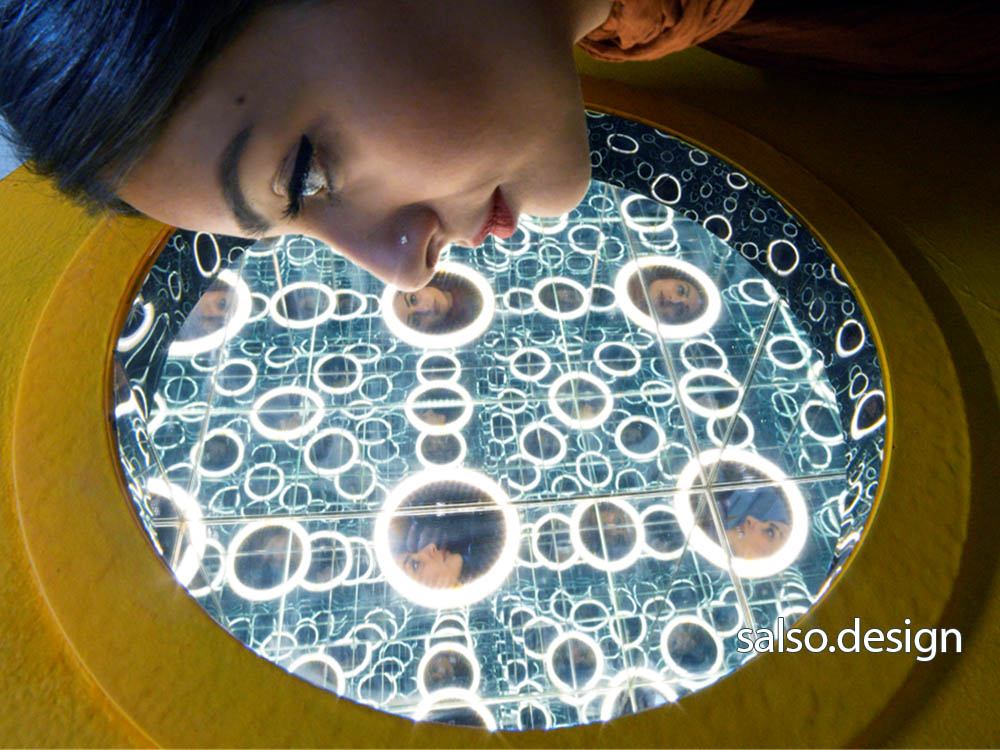Light art illuminates the canvas of darkness, painting a mesmerizing symphony of colors that dances with our imagination. Light art, a captivating form of artistic expression, uses light as a medium to create stunning visual displays that stretch the boundaries of imagination. Through the precise control of light, artists transform empty spaces into mesmerizing environments that engage and enchant viewers. One of the reasons light art is so attractive is its ability to evoke powerful emotions and create immersive experiences. The interplay of colors, shapes, and movements produced by light installations has a profound impact on our senses, drawing us into a world where reality merges with the ethereal.
The Evolution of Light Art: From Experiments to Mainstream Art Form
Light art is a genre that uses light as the primary medium to create intriguing installations and experiences. With origins in the 1960s, light art has grown into a diverse international art movement. Read on to discover the history, main forms, prominent creators, applications and creation methods behind the illuminating world of light art. The use of light as an artistic medium emerged most prominently in the 1960s, pioneered by artists like Gyula Kosice and Julio Le Parc. These early light artists began experimenting by incorporating electric light, kinetics and viewer interaction into their sculptures and installations. Many were motivated by interests in science, movement and perception.
Initially relegated to avant-garde circles, light art was propelled into wider recognition by large-scale works like The Light and Space Movement. Starting in California, this group that included James Turrell explored light’s immersive and perceptual effects. By the 1970s, light art had grown into an established international genre, with museums beginning to collect significant works.

Light Art: An artistic medium
What makes light art particularly alluring is its versatility as an artistic medium. Artists can manipulate light in endless ways, experimenting with different techniques and technologies to create awe-inspiring effects. Whether it’s large-scale outdoor installations that illuminate cityscapes or intimate gallery exhibits that play with shadows, light art offers an ever-expanding range of possibilities for artists to explore. This constant innovation and adaptation keep light art fresh and exciting, captivating audiences with its ability to surprise and delight. Moreover, light art often carries symbolic meanings and narratives that resonate with viewers on a profound level. Artists use light as a metaphor to convey concepts such as hope, transformation, and spirituality. The interplay of light and darkness, the juxtaposition of vibrant and subdued hues, and the dynamic interplay of patterns and shapes tell stories that transcend language barriers, creating a universal language of emotions and ideas. Light art’s ability to communicate on a deep, symbolic level is one of the reasons it captivates audiences and leaves a lasting impression.

Main Types of Light Art and Their Unique Qualities
Today’s light artists work in a range of mediums that spotlight light’s many aesthetic and experiential possibilities. Common types of light art include:
– Kinetic Light Sculptures: These move and shift, mixing light with kinetics. They may use motors, LEDs, bulbs and projections.
– Light Installations: Light takes center stage in site-specific installations, like entire luminous rooms or buildings. Artists modify spaces with colored lights and projections.
– Natural Light Manipulation: Some works interact with sunlight, moonlight or artificial light in nature. Mirrors, prisms or water may manipulate the light.
– Digital Light Art: Modern works harness digital technology, using multimedia, neon, lasers, and fiber optics. Some feature interactive or programmable elements.
– Light Painting: Artists use handheld lights to selectively illuminate or ‘paint’ a photograph over time during a long exposure shot.

Where Light Art Shines: Notable Venues and Functions
Light art adorns public spaces, adds ambiance, and helps create unforgettable experiences in locations like:
– Museums and Galleries: Light sculptures feature prominently at modern art museums and galleries. Exhibits spotlight light art’s evolution and range.
– Public Urban Spaces: Cities install light art to brighten and enliven plazas, buildings and streets.
– Concert and Event Spaces: Immersive light art enhances concerts, festivals, and special events.
– Nighttime Architectural Lighting: Colorful, creative lighting highlights bridges, landmarks, and buildings at night.
– Retail and Hospitality Spaces: Light art invigorates the ambiance of hotels, restaurants, and shops.

Notable Light Artists Who Shaped the Genre
Certain creators stand out for pioneering or mastering a type of light art. For example:
– Dan Flavin – Known for vibrant installations using commercial fluorescent light fixtures.
– James Turrell – Creates immersive light experiences within liminal spaces and architectural structures.
– Olafur Eliasson – Crafts large-scale installations using natural light, color, projection and reflections.
– Yayoi Kusama – Uses endless mirror rooms and hanging lights to create the illusion of boundless space.
– Iván Navarro – Sculpts interactive neon light works that engage social issues.
– Bruce Munro – Installs massive outdoor light exhibits drawing inspiration from nature.
– Jenny Holzer – Projects evocative statements and conceptual messages using light.
– Saleh Sokhandan – It creates attractive images by using light and shadow

Making Your Own Light Art: Helpful Techniques and Tips
While professional works require vast resources, some forms of light art can be created on a smaller scale:
– Long Exposure Light Painting – Use handheld lights to ‘draw’ shapes during long exposure photos.
– Projections – Make interesting effects by projecting light or laser patterns onto surfaces.
– Reflective Materials – Incorporate mirrors, polished metals, water and crystals to play with reflections.
– DIY Neon Signs – Make custom neon light signs using flexible neon tubing and transformers.
– Kinetic Sculptures – Build sculptures with motors and lights that spin and move.
– Programmable LEDs – Use Arduino boards or Raspberry Pis to code interactive LED light art.
– Prismatic Effects – Disperse light into rainbow patterns using prisms, crystals, glass or reflective materials.

Salso studio, the creator of light art
Light art offers incredible diversity as an art genre. Once an avant-garde experiment, it now captivates people worldwide through installations grand and subtle. Light art continually expands our sense of what light can do and how it can transform spaces and engage the senses. Give it a try yourself and discover new ways to play with light creatively. In conclusion, light art’s inherent ability to evoke emotions, its versatile nature, and its capacity for storytelling make it a truly attractive form of artistic expression. Its immersive and enchanting qualities transport viewers to otherworldly realms, leaving them with a sense of wonder and an unforgettable experience. As a creative advertising studio, we at Salso Design Studio possess an unwavering passion for harnessing the power of light art to create captivating visual narratives that engage and inspire.
we are here
If you need more information or want to be our customer, please contact us now
we pride ourselves on providing a comprehensive range of services to meet all of your needs. Whether you’re looking for expert consulting advice, innovative design solutions, or reliable implementation support, we’ve got you covered. Our team of experienced professionals is dedicated to delivering exceptional results that exceed your expectations every time. If you are interested in our work, you can see our portfolio and you can contact us right now.

